Natural Sciences
Emergence of a Viral Disease Epidemic of Sweet potato in Eastern Africa is Imminent – Plant virologists warn
Published
2 years agoon
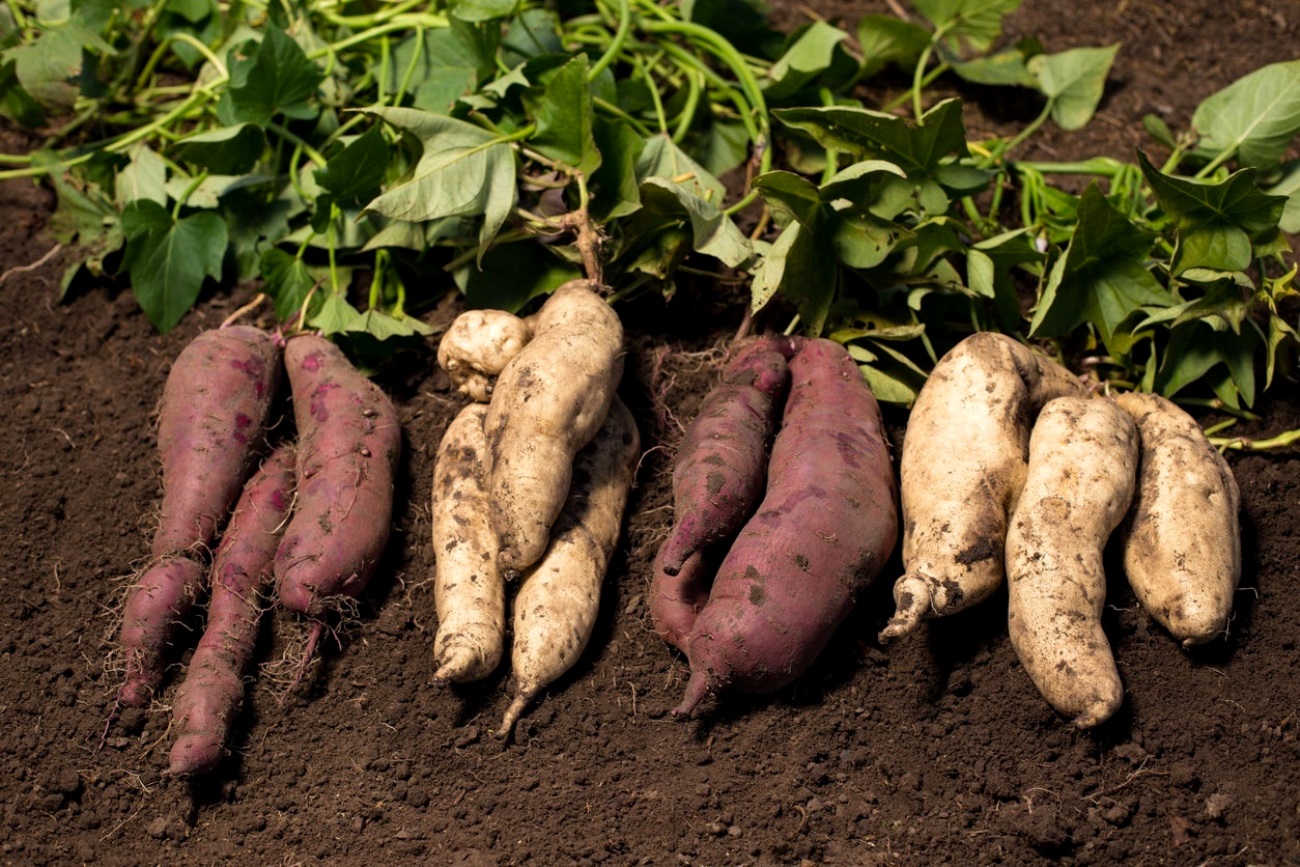
When COVID-19 emerged in 2019, it first remained temporarily localized as an epidemic in Huan China until it broke Chinese national and Asian continental borders attaining a global pandemic status. With COVID-19 and other epidemics and/or pandemics of humans and livestock, it is easier to explain the obvious impact on humans and/or livestock.
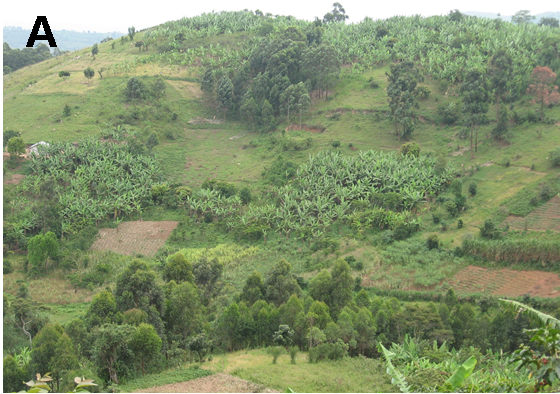
What about virus epidemics and pandemics that affect plants?
Virus epidemics and pandemics that affect plants cause significant disruptions in food production. In fact, the emergence and re-emergence of extremely dangerous plant viruses is the major pain to the 21st century agriculture and sustainable food production.
Viral diseases of plants lead to complex outcomes of food shortages, economic meltdown and loss of lives especially when the affected crop plants are central to the economics and livelihoods of the people. Think of what would happen if an epidemic caused significant effect or eliminated crops like maize, banana, cassava or sweetpotato from sub-Saharan Africa.
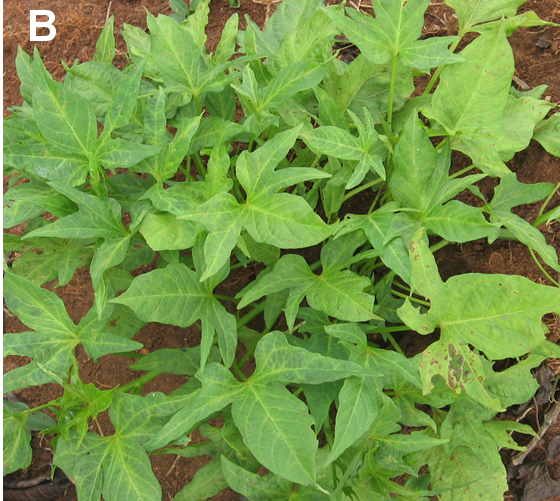
Most viruses affecting livestock and humans are spread and transmitted by means of physical contact between hosts. Furthermore, human and livestock hosts are mobile. On the other hand, plants do not move and must thus depend on other agents (vectors) for the spread of viruses between hosts. Consequently, over 98% of plant viruses are transmitted by vectors. These vectors may include arthropods (especially insects), nematodes, fungi, and parasitic plants. In plants, a virus disease epidemic becomes optimized by the ability of vectors facilitating fast spread of the virus in an agro-ecosystem.

New study predicts emergence of disease epidemic in sweetpotato
A new study led by Prof. Arthur Tugume at the Department of Plant Sciences, Microbiology and Biotechnology in the College of Natural Sciences at Makerere University predicts potential of emergence of a new disease epidemic in sweetpotato.
The study recognizes that by default, viruses are not constrained to perpetually occupy a single ecological niche. This is because viruses have inherent genetic and evolutionary abilities that enable their acquisition of better fitness to always expand their host and geographical ranges.
While viruses enjoy such fitness advantages in nature, the current study points out unique examples where some viruses in eastern Africa behave awkwardly. These viruses first hid under the guise of being less important and seemingly of no impact in cropping systems, and all of a sudden hell broke loose and the entire farming system was caught unaware.
The study titled; “Endemism and reemergence potential of the ipomovirus Sweetpotato mild mottle virus (family Potyviridae) in Eastern Africa: half a century of mystery” shows that a virus, named Sweetpotato mild mottle virus (SPMMV) was first detected in eastern Africa in the 1970’s. SPMMV is currently the third most prevalent virus of sweepotato in the region and is most destructive in mixed infections with other viruses. Very strangely, SPMMV is geographically restricted to eastern Africa (confirmed only in Uganda, Kenya and Tanzania). This sharply contradicts other known sweetpotato viruses that occur globally wherever sweetpotato is grown.
According to Dr. Deusdedith Mbanzibwa a co-author and Head of Disease Control Unit at Tanzanian Agricultural Research Institute, “it is a half-century-old mystery how SPMMV remains localized in East Africa while other viruses on sweetpotato show a global incidence.” Dr. Mbanzibwa adds, “it is important we generate basic information on this virus as soon as possible such that immediately an epidemic explodes we can counter-it based on the information we have as opposed to being caught unaware of the destructive effects of an epidemic.”

Why should we be concerned about outbreak of an epidemic on sweetpotato?
Plant disease epidemics cause a breakdown in food production and availability in communities that depend on the affected plants as food staples. If sweetpotato production breaks down, it directly translates into limited food supplies in local communities that depend on it for food.
According to Dr. Titus Alicai, a senior virologist and co-author based at the National Crops Resources Research Institute (NaCRRI), Namulonge Uganda, “between the 1980’s-1990’s, a devastating viral pandemic (cassava mosaic disease, CMD) destroyed cassava cropping systems in eastern Africa. As a result, dozens of lives were lost because many communities solely depended on cassava for food and income”. Although these viruses had been detected in the region as early as 1800’s, it was not until the 1980s that destructive effects of the disease became apparent.
Dr. Alicai adds that, “when cassava got destroyed by CMD, sweetpotato became an immediate alternative to millions of hungry people, but now sweetpotato is also burdened with diseases arising from viruses.” Despite heavy investments in disease control in cassava, the CMD pandemic is not completely controlled.
Why is eastern Africa important with respect to emergence of plant viruses?
According to this study, SPMMV is not the first unique virus to emerge or reemerge in eastern Africa. An earlier study by Prof. Tugume and colleagues published in 2010 in Molecular Ecology showed that East Africa is a hotspot for the evolutionary diversification of yet another virus in sweetpotato, named Sweetpotato feathery mottle virus (SPFMV).
Many studies show this region as the home of epidemics in rice caused by Rice yellow mottle virus (RYMV). Highly lethal strains of Cassava mosaic geminiviruses (CMGs) causing CMD initiated this epidemic from eastern Africa. Unique strains of Sweetpotato chlorotic stunt virus (SPCSV) are incident in eastern Africa. SPCSV is unique because it almost indiscriminately enhances the viral concentrations of other co-infecting viruses in sweetpotato. The list of damaging plant viruses or their strains that have emerged from eastern African region is long and cannot not be exhausted here.
Biologists studying diversity of plants and animals have also coded eastern Africa as a home of the “hottest hotspot of biodiversity” of endemic land plants and animals located in Eastern Arc Mountains of Kenya and Tanzania. The features of eastern African ecosystem that incite virus epidemics in plants are not fully known. However, it is suspected that the microclimatic changes as modulated by the Indian Ocean dipole could be one of the drivers of virus emergence and reemergence in the region.
Emergence of SPMMV in sweetpotato closely resemble that of viruses in cassava
The current study specifically compared SPMMV with two viruses infecting cassava: cassava brown streak virus, and Ugandan cassava brown streak virus, collectively called cassava brown streak ipomoviruses (CBSIs).
CBSIs first appeared in the 1930’s in coastal east Africa but went completely silent for about 70 years and then suddenly re-emerged in late 1990’s-mid 2000’s to what is today the single largest threat to cassava production in Africa. CBSIs cause a disease called “cassava brown streak disease” (CBSD). Between 1930’s-1990’s, the CBSIs were able to “amass ability” to cause untold suffering of cassava cropping from 2000’s to-date.
Similarly, since the 1970’s when SPMMV was first reported in the region, the virus has been “amassing an ability” to cause more disease in sweetpotato. This is implied directly by evidence of positive selection found in its genes. Positive selection refers to “survival for the fittest” in Charles Darwin’s terms to mean that, individual virus particles in the SPMMV population are becoming more and more highly efficient in causing disease. Today, half a century later, one can argue that it is about time that the SPMMV will incite a new disease.
Note that both SPMMV and CBSIs belong to the same taxonomic grouping of plant viruses in a genus called “Ipomovirus”, and family called “Potyviridae” which is the largest family of plant viruses with RNA genomes. Hence, similarities in the disease spread between SPMMV and CBSIs are not unexpected.
Expert guide to sweetpotato virology research for preparations against the epidemic
“If we can generate advance basic scientific information concerning how the SPMMV infects sweetpotato plants, how it is transmitted by vectors between plants, and circumstances fostering field spread of the virus, we will be better prepared to handle an epidemic that may arise from the virus,” Prof. Tugume states.
He adds: “we should be able to undertake these studies quickly because SPMMV is naturally incident on sweetpotatoes in Uganda, Kenya and Tanzania in levels causing less damage on its own at the moment, although this damage escalates when the virus occurs in multiple infections.”
The co-authors highlight serious research gaps for critical research investment in sweetpotato virology. Vector transmission is such an important aspect of virus disease epidemics of plants. Therefore, this study has proposed three possible explanations to account for the virus-vector and virus-host relationships of SPMMV. These are called hypothesis #1, #2, and #3, built in a fashion that allows experimentation to prove them right or wrong:
- Hypothesis #1: “SPMMV is opportunistically aphid-transmitted with potyvirus SPFMV as a helper virus.” This hypothesis postulates that SPMMV is transmitted by “chance” by a group of insects called aphids but this happens when SPMMV co-infects sweetpotatoes with another virus, SPFMV that is transmitted efficiently by aphids.
- Hypothesis #2: “Vector-mediated transmission of SPMMV is modulated by synergism with SPCSV.” Under this hypothesis, the concentrations of SPMMV in plant tissues increases when it co-infects with another virus, SPCSV, and this increases chances of SPMMV being picked by insects for transmission to other plants.
- Hypothesis #3: “SPMMV tropism and histo-localization changes upon co-infection with SPCSV.” How much viral concentration is found in different plant tissues can change depending on which tissues that are preferred by the virus. Certain plant viruses prefer to stay and multiply from certain tissues than others.
Dr. Alicai said, “If we can determine vector transmission dynamics including the actual vector(s) transmitting SPMMV, which plant tissues the virus prefers for its multiplication, and generate many complete sequences of SPMMV genomes, we will be better prepared for epidemics arising from the emergence of SPMMV”.
Sweetpotato is a vegetatively propagated plant in which the top-most 15-40cm part of the plant is used for initiating the new crop, a practice that is the main route of accelerated of virus spread in the cropping system. Also, insects especially aphids and whiteflies are the major vectors transmitting viruses in sweetpotato. The research gaps highlighted with respect to SPMMV require urgent attention for advance preparation in case an epidemic breaks loose on the sweetpotato cropping system.
This study has been published by the American Phytopathological Society (APS) in an open access journal, “Phytobiomes Journal”, and is freely accessible on https://apsjournals.apsnet.org/doi/10.1094/PBIOMES-05-22-0031-RVW
For more details, please contact;
Prof. Arthur Tugume
Lead Scientist
Department of Plant Sciences, Microbiology and Biotechnology
College of Natural Sciences (CoNAS)
Makerere University
Email: arthur.tugume@mak.ac.ug
Tel: +256772514841
Dr. Deusdedith Mbanzibwa
Tanzania Agricultural Research Institute (TARI),
Biosciences Centre, Dodoma, Tanzania
Email: d.mbanzibwa@yahoo.co.uk
Email: Tel: +255755881758
Dr. Titus Alicai
Root Crops Research Program
National Crops Resources Research Institute (NaCRRI)
National Agricultural Research Organization (NARO)
Email: talicai@hotmail.com
Tel: +256772970585
Hasifa Kabejja
Principal Communication Officer
College of Natural Sciences
Makerere University
Email: pr.cns@mak.ac.ug
Tel: +256774904211
You may like
-


Simplicity, Service & Scholarship: Hallmarks of Professor Livingstone Luboobi’s Legacy
-


EfD-Mak Holds 2nd Advisory Board Meeting: Charts Path for Growth
-


Public University Legal and Accounting Officers Trained on Governance and Compliance
-


Celebrating the Life of Prof. Livingstone Sserwadda Luboobi
-
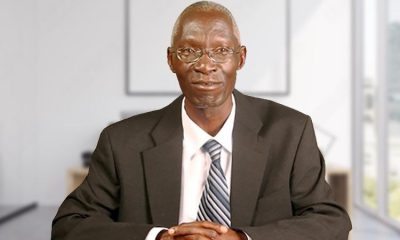

Fare Thee Well Prof. Luboobi
-
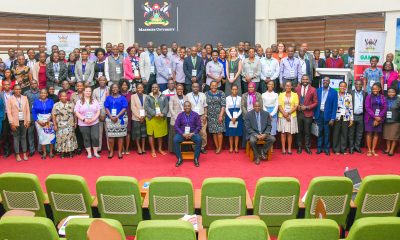

Strengthening Grants Management Through Institutional Collaboration and Capacity Building
Natural Sciences
CoNAS Participates in the 2025 National Science Week Exhibition
Published
1 month agoon
June 17, 2025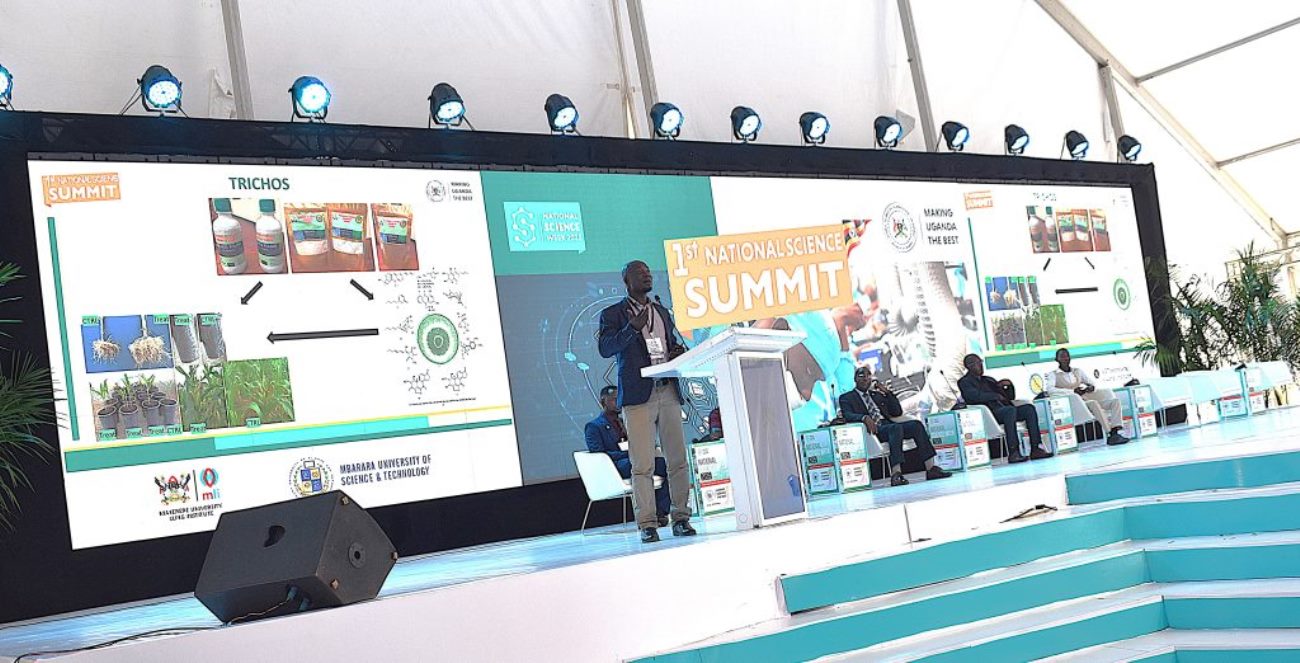
*****15 students from different departments at CoNAS are showcasing their projects.
Over 300 Ugandan innovators, among them students from the College of Natural Sciences (CoNAS) and other science-based colleges at Makerere University are participating in the 2025 National Science Week exhibition, currently underway at the Kololo Independence Grounds.
Launched in 2021, the National Science Week is an annual event organized by the Science, Technology, and Innovation (STI) Secretariat under the Office of the President. The exhibition serves as a strategic platform for showcasing Uganda’s advancements in science, technology, and innovation, both at the national level and on the global stage.
Held under the theme “Made in Uganda: Innovation to Market”, the 2025 edition (running from 15th-20th June) aims to highlight the country’s growing capacity to transform home-grown scientific ideas and research into viable, market-ready products and technologies.
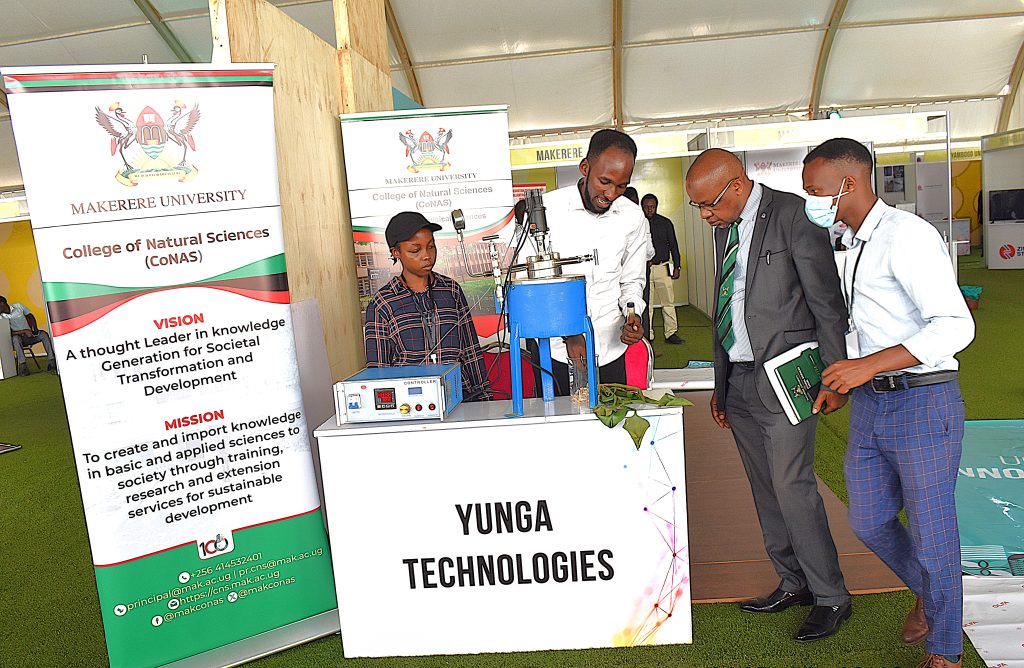
Key highlights from the official launch of the National Science Week
During the official launch held on 13th May 2025, the Minister of Science, Technology, and Innovation, Hon. Dr. Monica Musenero Masanza, outlined several milestones Uganda has achieved over the past year, including:
- The commencement of clinical trials for locally developed therapeutics, marking a significant step in Uganda’s biopharmaceutical sector.
- Notable growth in the electric vehicle (EV) industry, including the deployment of over 5,000 electric motorcycles and 27 electric buses across the country.
- Establishment of critical green infrastructure, including 140 battery swapping stations and more than 30 direct current (DC) fast chargers nationwide.
According to the Minister, these developments demonstrate Uganda’s advancing capabilities in green technology and sustainable mobility solutions.
The Minister also highlighted additional achievements by the STI Secretariat, including the revitalization of Sukulu Phosphates, the launch of both the Deep Tech and Climate Tech summits, and the operationalization of vaccine production lines for both human and animal health. Dr. Musenero expressed gratitude to the Government of Uganda for its continued support, emphasizing its strategic vision of leveraging science, technology, and innovation as a transformative vehicle to position Uganda as a continental leader in deep tech innovation.
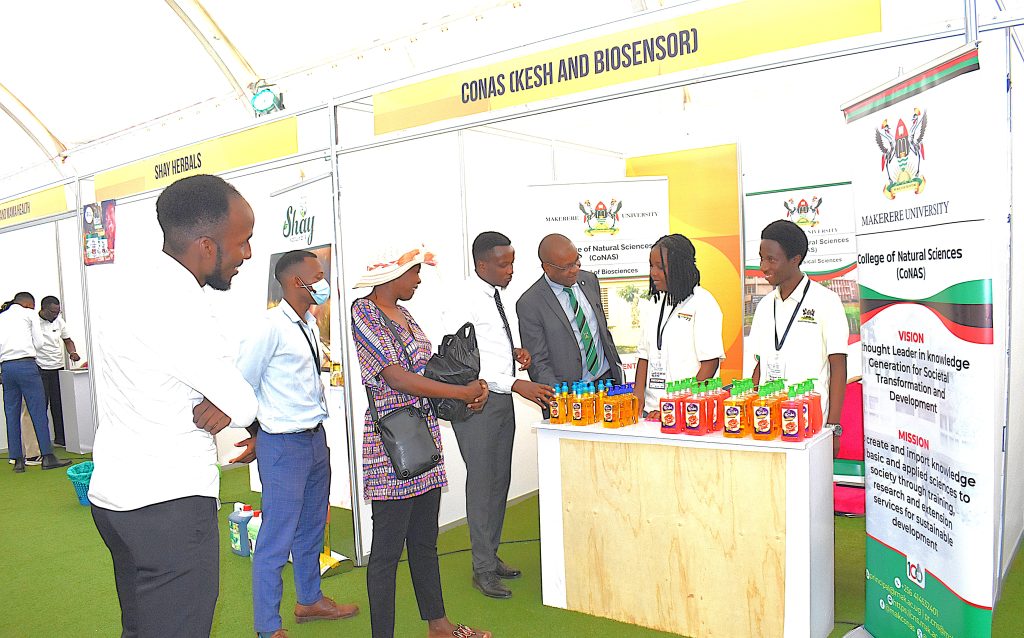
The 2025 National Science Week Activities
The National Science Week is designed to be an interactive experience for all attendees. According to Ms. Cathy Muhumuza from the STI, the exhibition will feature various activities including the official opening by the President of the Republic of Uganda, H.E. Yoweri Kaguta Tibuhaburwa Museveni, expected to take place on Thursday, 19th June 2025. Other activities will include policy dialogues, the Academia Day dedicated to young innovators, and the Investor Day providing a platform for innovators to connect with potential investors.
Additionally, the event will host a “Made in Uganda Supermarket,” allowing visitors to purchase products directly from exhibitors.
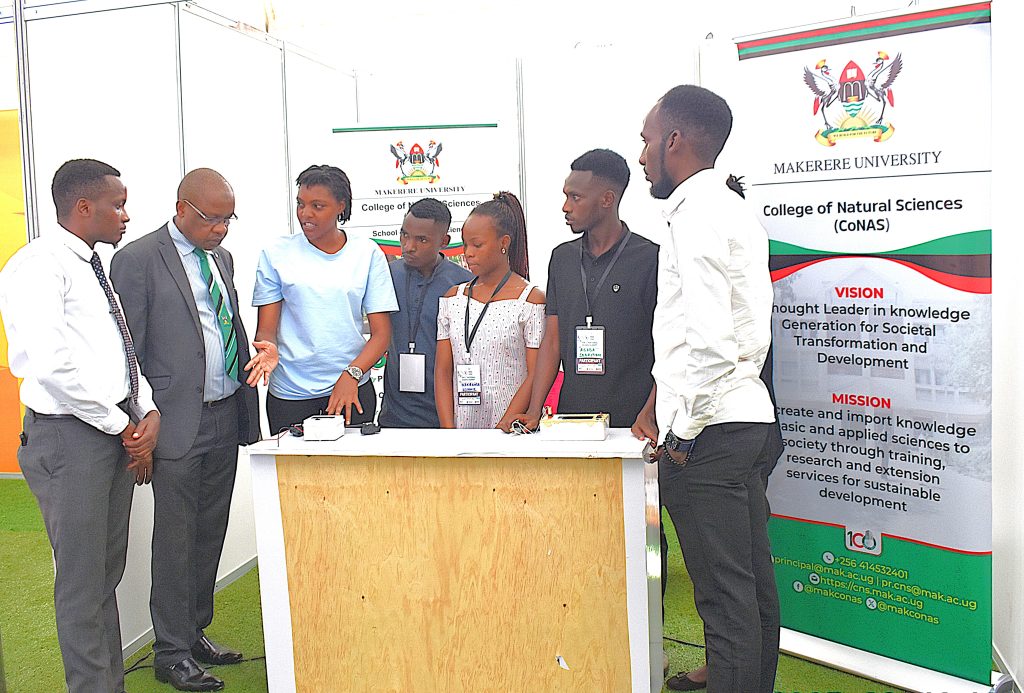

CoNAS Students’ projects
Among the many innovators featured at the exhibition are several talented student teams from CoNAS, presenting a diverse array of projects across scientific disciplines, including biotechnology and green energy. Guided by their lecturers and coordinated by Prof. Juma Kasozi, Deputy Principal of CoNAS, the students are showcasing the following projects:
- Anti-fungal and Anti-bacterial Gel Research Project
Team Leader: Mwebaze Bruce
Team Members: Atim Martha, Sebastian Jordan
This project explores the development of a topical gel with both anti-fungal and anti-bacterial properties, aimed at improving public health outcomes in communities with limited access to conventional treatments. - Minoxidil Production for Hair Regrowth
Team Leader: Keinembabazi Melissa
Team Members: Hashima Nanyiri, Nkamusiima Andrew
Focused on producing affordable, locally made Minoxidil, this project aims to provide a cost-effective solution for treating hair loss. - Infrared Biosensor for Aflatoxin Detection
Team Leader: Rubeihayo Randolp
Team Members: Namuleme Martha, Wabitereza Teddy
This innovation utilizes spectrophotometry to develop an infrared biosensor capable of detecting harmful aflatoxins in food, contributing to food safety and public health. - Biofuel Production from Water Hyacinth
Team Leader: Bill Garvin
Team Members: Kalanguka Patience Pearl, Nuwagaba Victor
The project converts invasive water hyacinth into sustainable biofuels using hydrothermal liquefaction, offering an environmentally friendly alternative energy source. - Automobile Fuel Gauge Detector
Team Leader: Ayebare Sam
Team Members: Achieng Rosemary, Nakirinda Winnie
This project involves the development of a reliable fuel gauge detector to improve vehicle fuel management and efficiency.
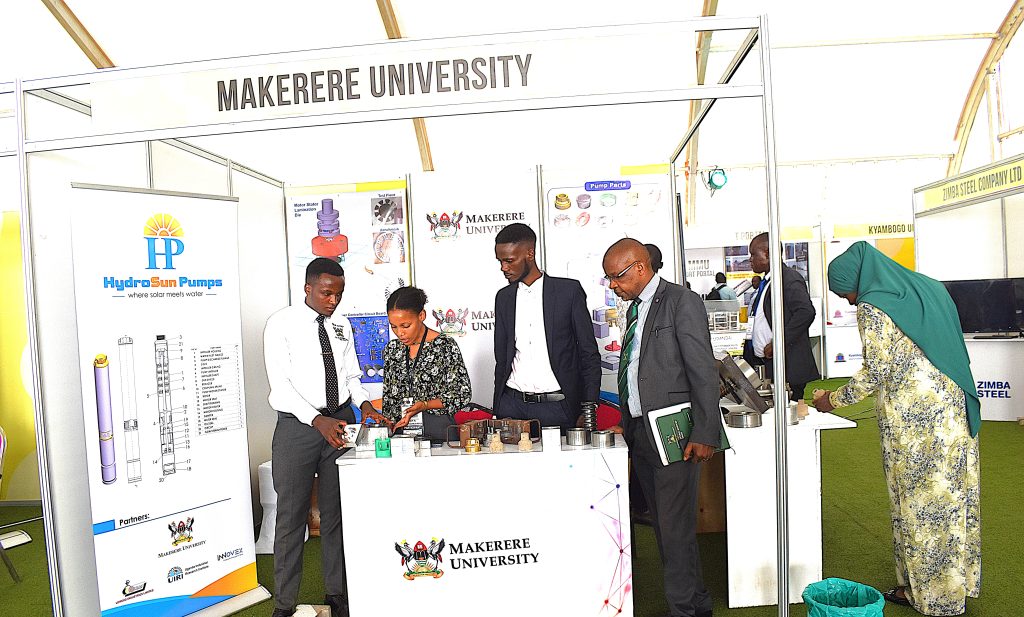
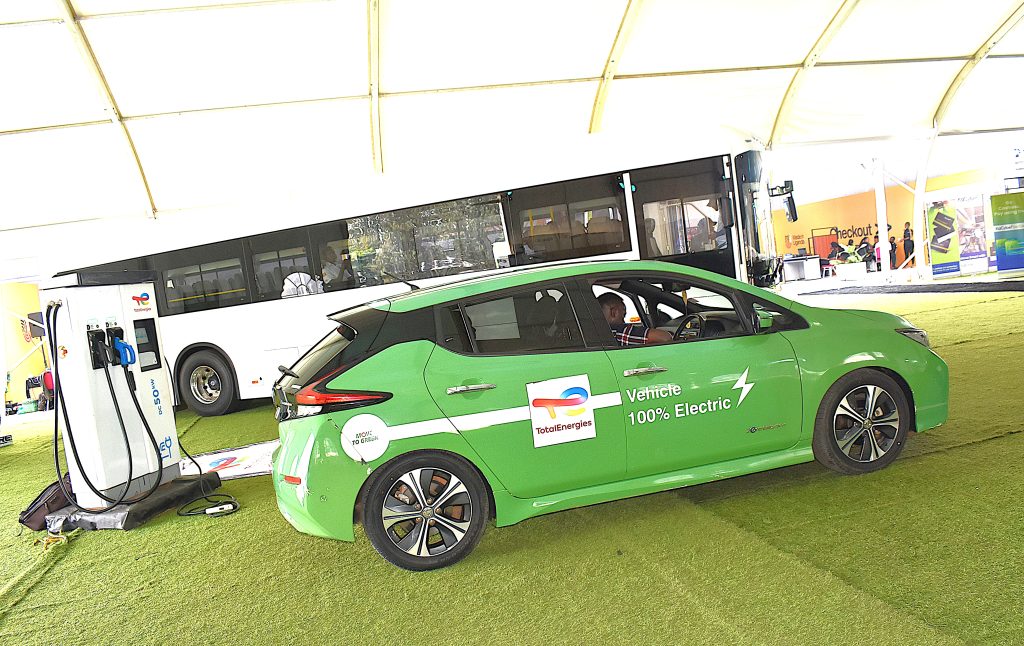
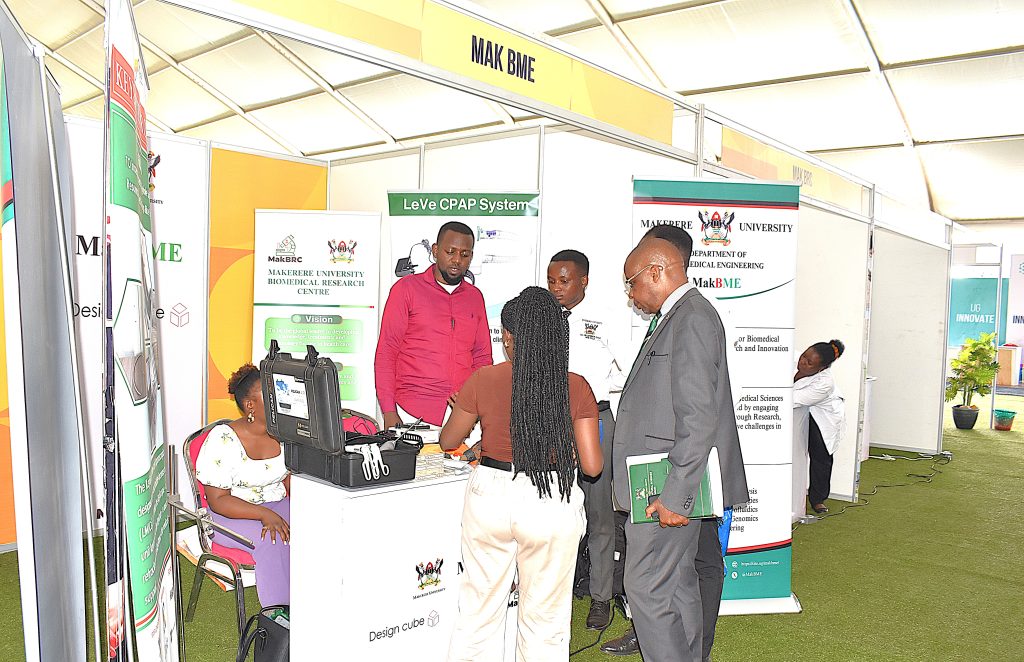
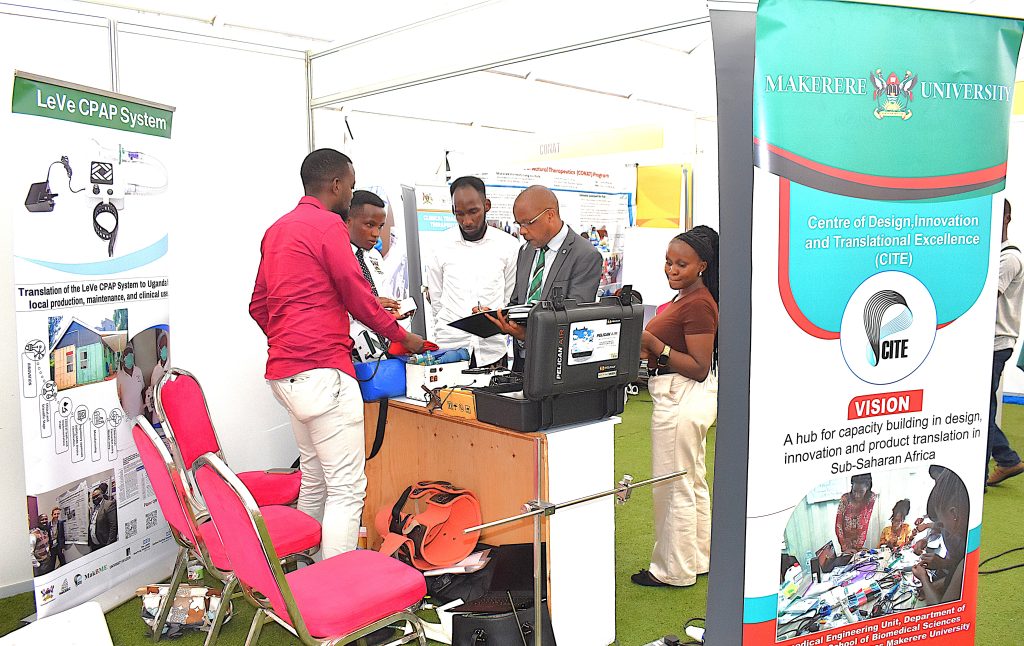
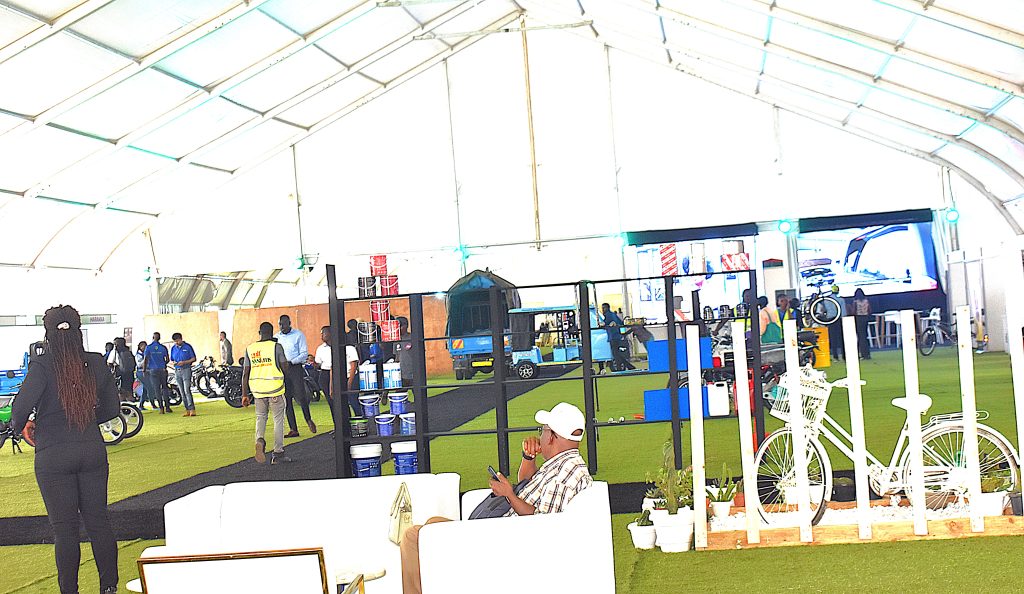
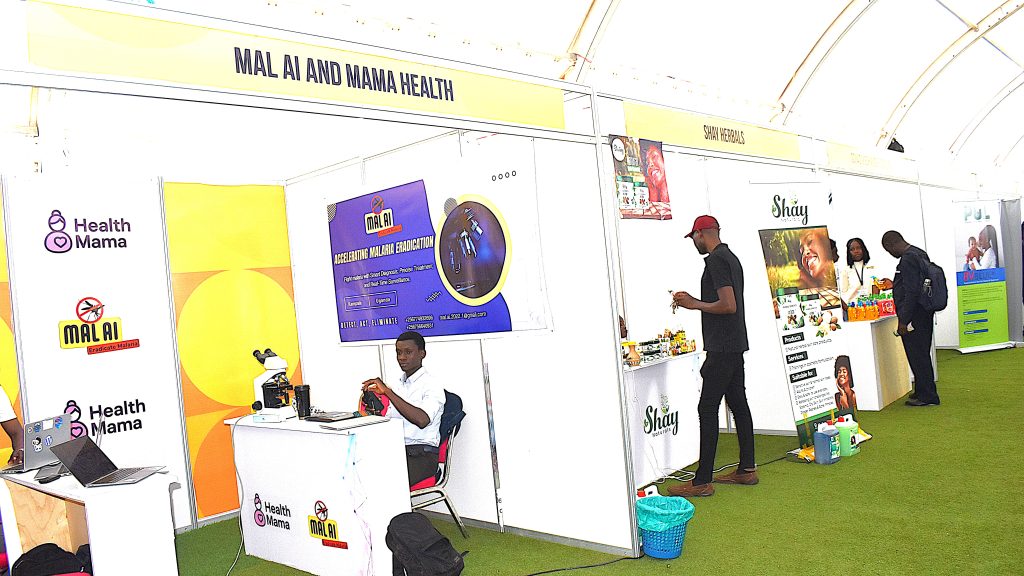
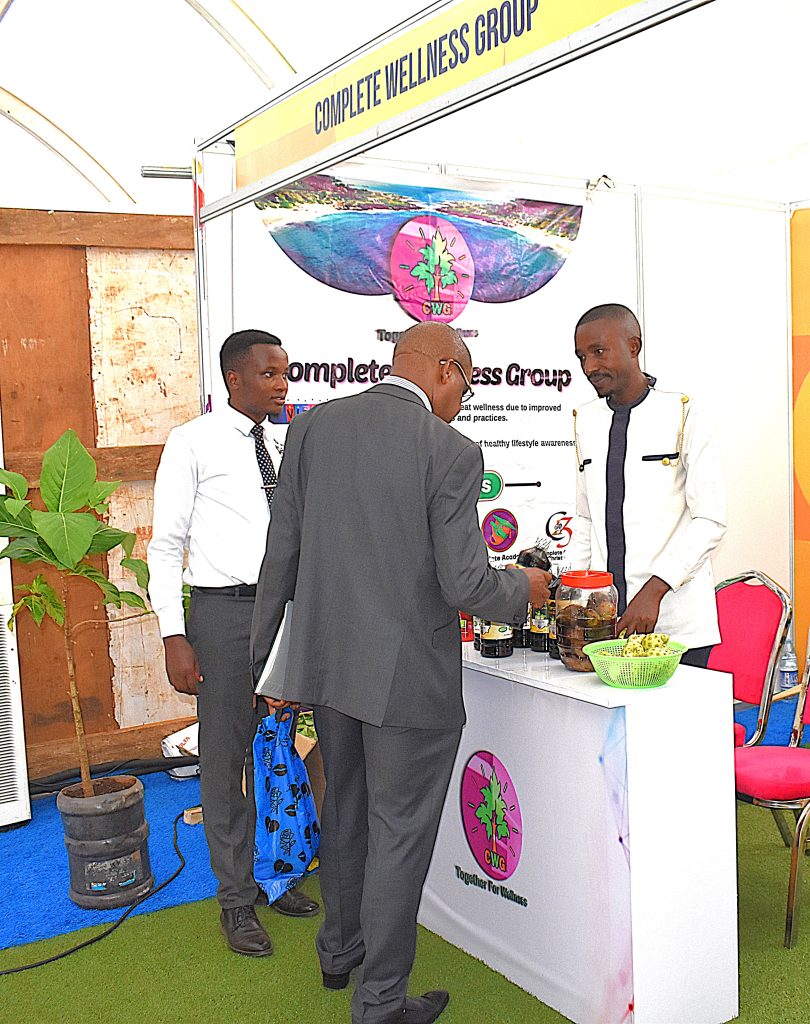

The College of Natural Sciences (CoNAS) is one of the 9 constituent colleges of Makerere University, dedicated to advancing scientific knowledge and education in Uganda.
Comprising two schools and seven departments, CoNAS offers cutting-edge research and academic programs across diverse fields, including chemistry, physics, mathematics, and biological sciences.
The College is committed to nurturing innovative thinkers and leaders who can tackle the complex challenges of today’s world through scientific exploration and discovery. With a long-standing tradition of academic excellence, CoNAS plays a central role in shaping Uganda’s scientific and technological future. It fosters a culture of critical thinking, problem-solving, and sustainable development. The College’s distinguished faculty, state-of-the-art laboratories, and collaborative research initiatives continue to inspire and develop world-class professionals who make significant contributions to both national and global progress.
This edition of the report highlights the activities and achievements of 2024, aligned with the University’s strategic focus on Innovative Teaching and Learning, Research, Innovations and Technology Transfer, and Strategic Engagement and Partnerships.
Natural Sciences
Preparing Graduates for Life after University: CoNAS Launches Terminal Seminar for Final Year Students
Published
3 months agoon
April 24, 2025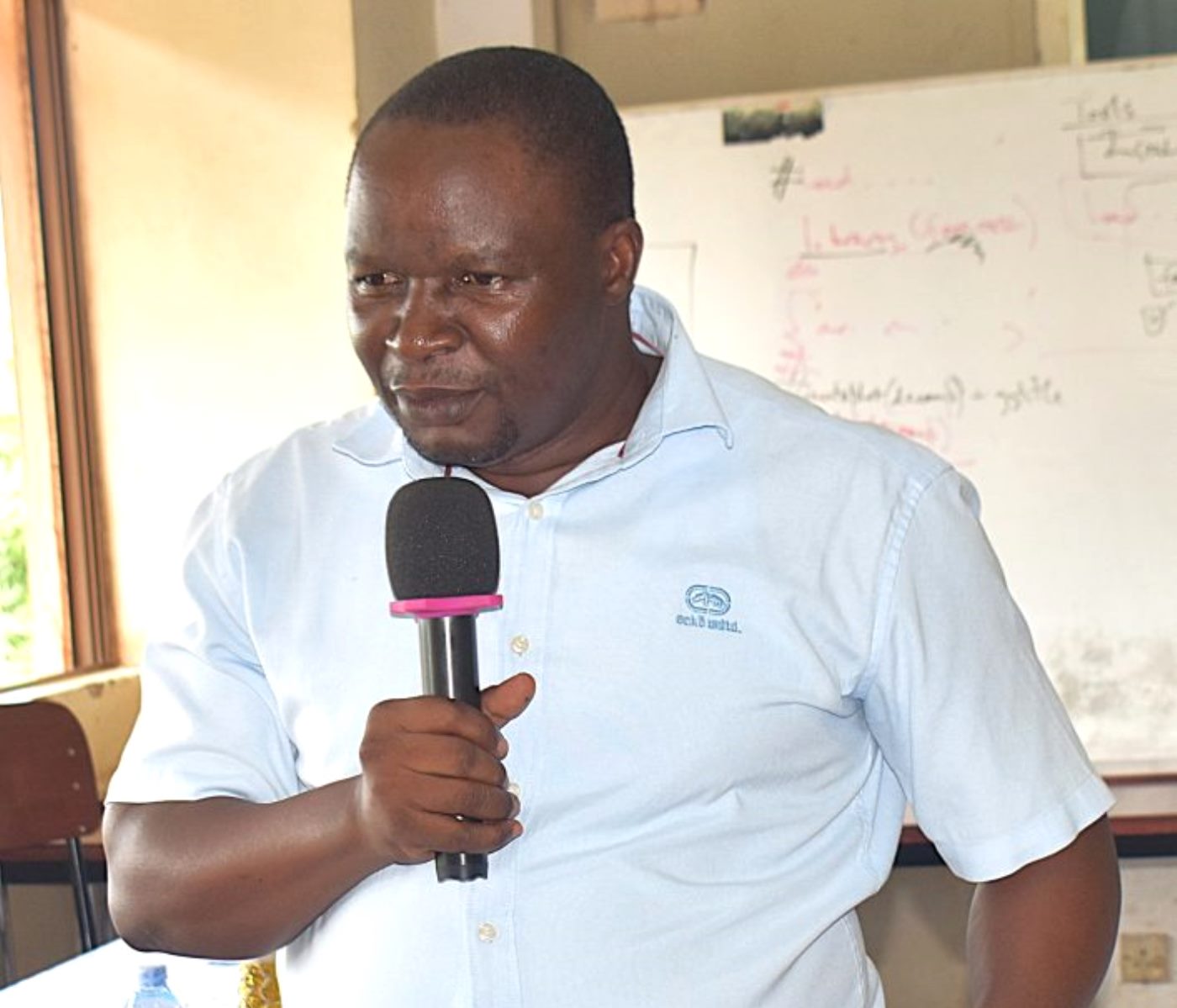
Relevance of the seminar
Transitioning from university life to the professional world can be a daunting experience for many graduates. This challenge is particularly pronounced in Uganda, the broader East African region, and across Africa, where many university leavers find themselves ill-equipped to face the realities of life after school. Issues such as limited career guidance, lack of personal development resources, and insufficient awareness of societal expectations leave many graduates unprepared for what lies ahead.
According to data from the Uganda Bureau of Statistics (UBOS), the youth unemployment rate in the country stands at approximately 13.3%. Each year, over 400,000 graduates join the job market, all vying for a mere 9,000 available formal employment opportunities. This staggering imbalance creates a climate of intense competition, often resulting in widespread disillusionment, anxiety, and in severe cases, depression – largely due to the absence of structured transition programmes to support young people during this critical phase of life.
While some graduates manage to find employment, launch entrepreneurial ventures, or pursue further academic study, many others struggle with prolonged unemployment or underemployment. This vulnerable group is at risk of turning to detrimental coping mechanisms such as substance abuse, criminal activity, or social withdrawal. One of the root causes of this unpreparedness is the lack of mentorship and real-world guidance in key areas such as workplace conduct, professional ethics, entrepreneurship, leadership, and personal financial management.
In response to this pressing need, the College of Natural Sciences (CoNAS) at Makerere University, through its School of Biosciences, has launched an innovative initiative – the Terminal Seminar/Symposium for Final-Year Students. Spearheaded by Heads of Departments within the School, the seminar is designed to bridge the gap between academic knowledge and the realities of post-university life by equipping students with essential life and career skills.
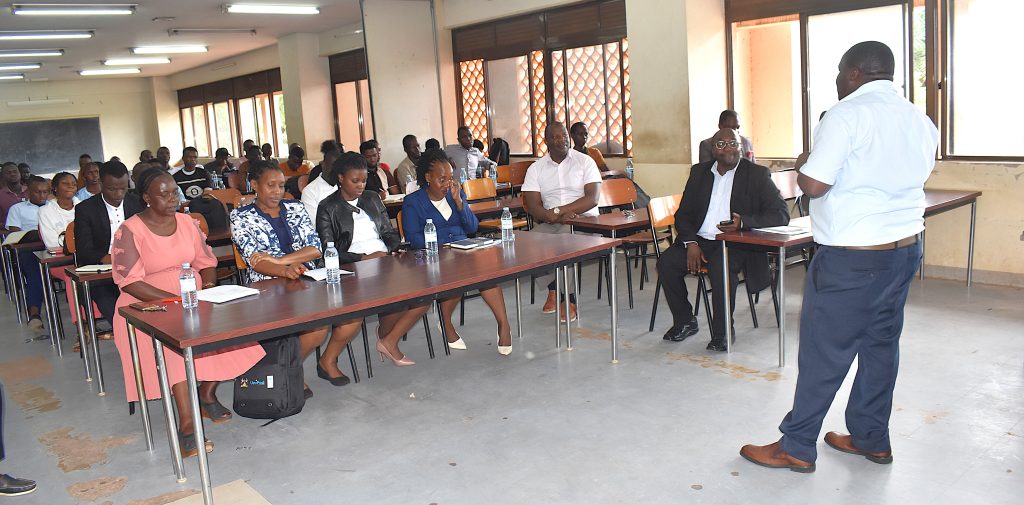
Objectives of the Terminal Seminar
The seminar aims to:
- Impart practical knowledge on workplace ethics, professional behaviour, and employability.
- Cultivate entrepreneurial thinking and leadership skills, enabling students to create their own opportunities.
- Provide strategies for coping with unemployment, social pressure, and the transition period.
- Raise awareness about mental health and equip students with tools to manage transition-related stress.
- Offer insights into navigating employment in public and private sectors, non-governmental organizations (NGOs), and the global job market.
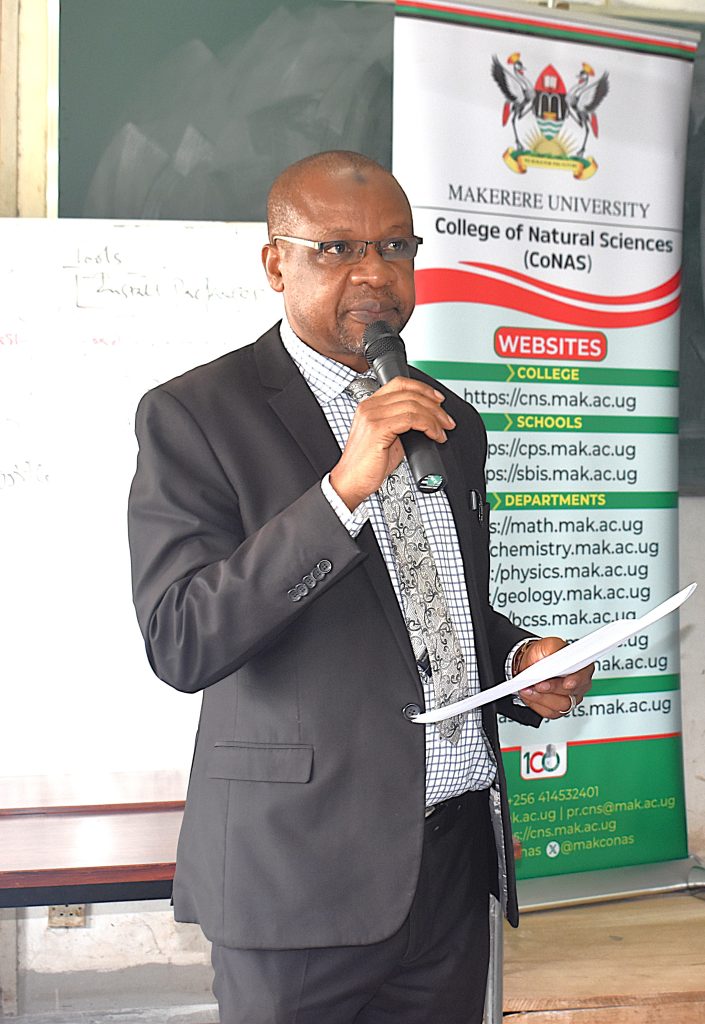
Expected Outcomes
By the end of the programme, students are expected to:
- Gain a broader awareness of career and self-employment opportunities.
- Develop realistic expectations about the challenges and opportunities post-university.
- Experience reduced levels of frustration and vulnerability to harmful behaviours.
- Build connections and networks with industry professionals and mentors.
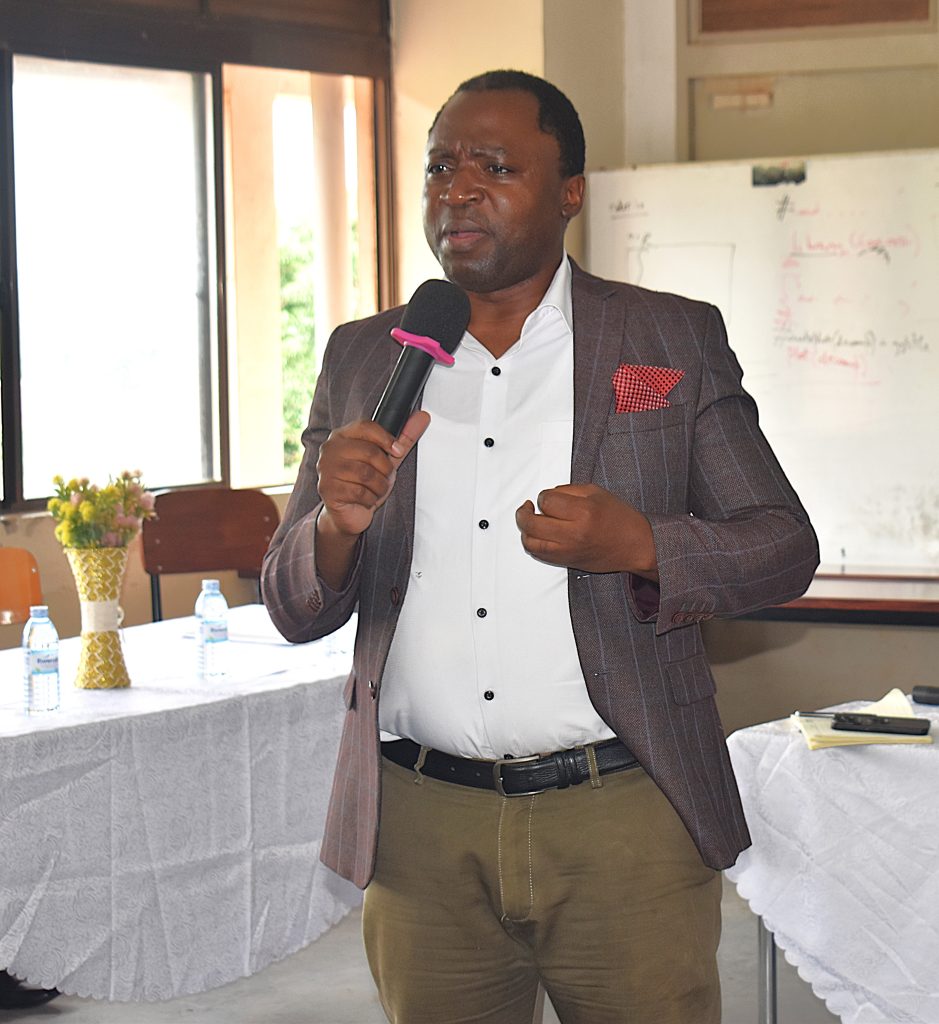
2025 Terminal Seminar Event Highlights
On 23rd April 2025, CoNAS held its flagship Terminal Seminar for Final Year students set to complete their studies in June 2025. The seminar was coordinated by Dr. Godfrey Kawooya Kubiriza, Head, Department of Zoology, Entomology, and Fisheries Sciences, with support from Dr. Barbra Nerima and Dr. Joel Isanga, both faculty members from the Department of Biochemistry and Systems Biology.

The event featured a series of empowering sessions, designed to help students navigate the transition from academic life to the professional world. Key topics included career planning, workplace ethics, entrepreneurship, and mental well-being.
A line-up of seasoned professionals and motivational speakers – including Mr. John Walugembe, Executive Director of the Federation of Small and Medium Sized Enterprises Uganda, and Dr. Catherine Mbidde, Ag Director, Makerere University Innovations Pod (UniPod), also Lecturer at the School of Business at CoBAMS, shared their personal journeys, professional insights, and practical advice for thriving beyond the university walls. Other Speakers included Dr. Alex Behakanira from the Department of Mathematics, Makerere University; Mr. Henry Nsubuga, Manager, Counselling and Guidance Centre, Makerere University; Mr. Maurice Ssebisubi, Senior Programme Officer (Fisheries and Environment) at the Embassy of Iceland; and Ms. Sylvia Kajubi, Deputy Principal at the Insurance Training College of Uganda.
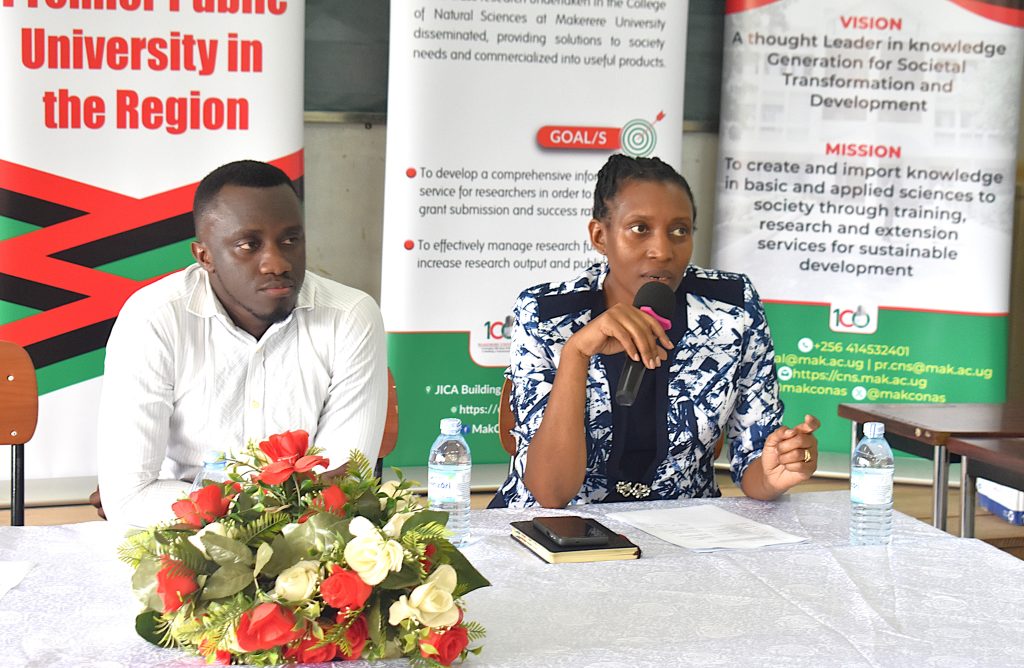
Sharing his personal journey, Mr. John Walugembe offered valuable insights to students, emphasizing the critical importance of time management in shaping a successful career. He encouraged them to cultivate patience, resilience, and integrity as they transition from academic life into the professional world.
Mr. Walugembe also urged the students to maintain an open mind when approaching the job market. “You should not confine yourselves to roles within your academic fields. Remain open to exploring a wide range of opportunities that may arise. You need to approach the job market with flexibility,” he advised.
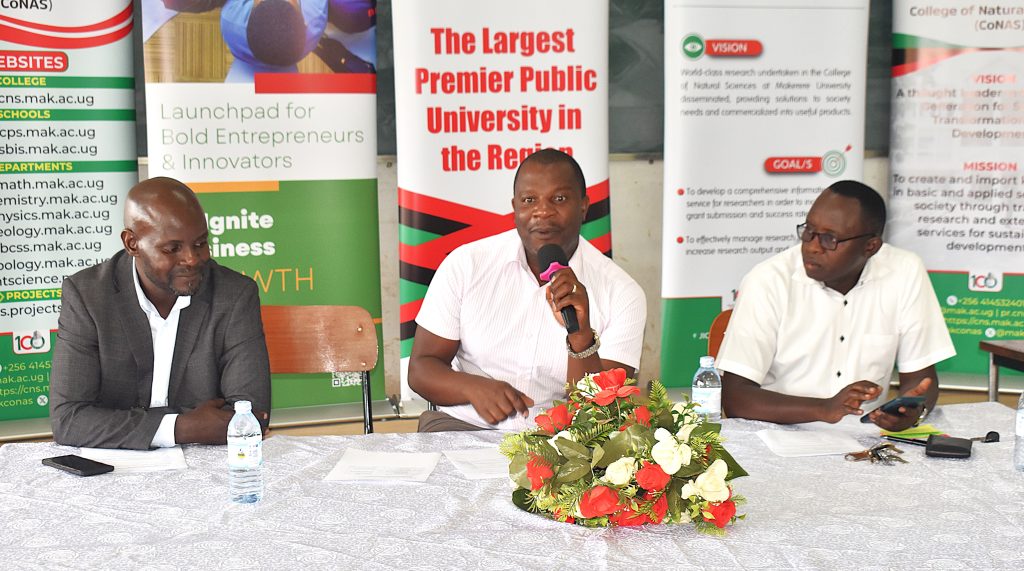
In addition, he highlighted the dual significance of academic excellence and strong professional networks, noting that good grades can open doors, but relationships and connections often determine how far one can go in their career journey. “The best way to build networks is to improve your value,” he advised.
Addressing the students on how to leverage the digital landscape to advance their careers, Dr. Catherine Mbidde emphasized the transformative potential of digital tools in shaping future opportunities. She, however, expressed concern over the growing trend of digital tool misuse – platforms that could otherwise be harnessed to explore career paths and unlock job prospects.
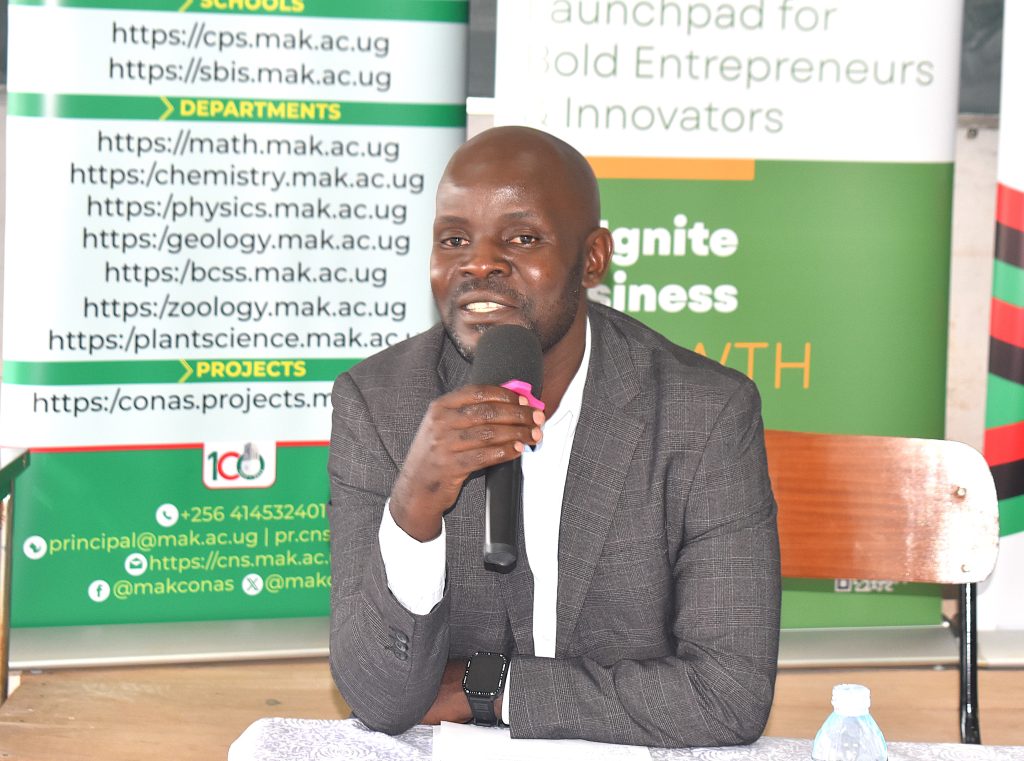
Dr. Mbidde urged the students to invest in nurturing their entrepreneurial skills, encouraging them to proactively develop plans, engage in regular self-assessment, and seek out mentors who can offer guidance and support along their professional journeys. She underscored the importance of spiritual grounding, advising students to cultivate a strong relationship with God as a source of direction and resilience in navigating the complexities of their career paths.
Mr. Basiima Collins from UniPod emphasized the importance of a mind-set shift as graduates navigate their career paths. He urged students to actively participate in networking events and foster an entrepreneurial mind-set, stressing that these actions are essential for personal and professional growth. “By embracing opportunities for networking, you can build valuable connections and open doors to new possibilities. Additionally, cultivating an entrepreneurial mind-set allows you to approach challenges with creativity, resilience, and a proactive attitude, which are crucial qualities for success in today’s dynamic job market.”
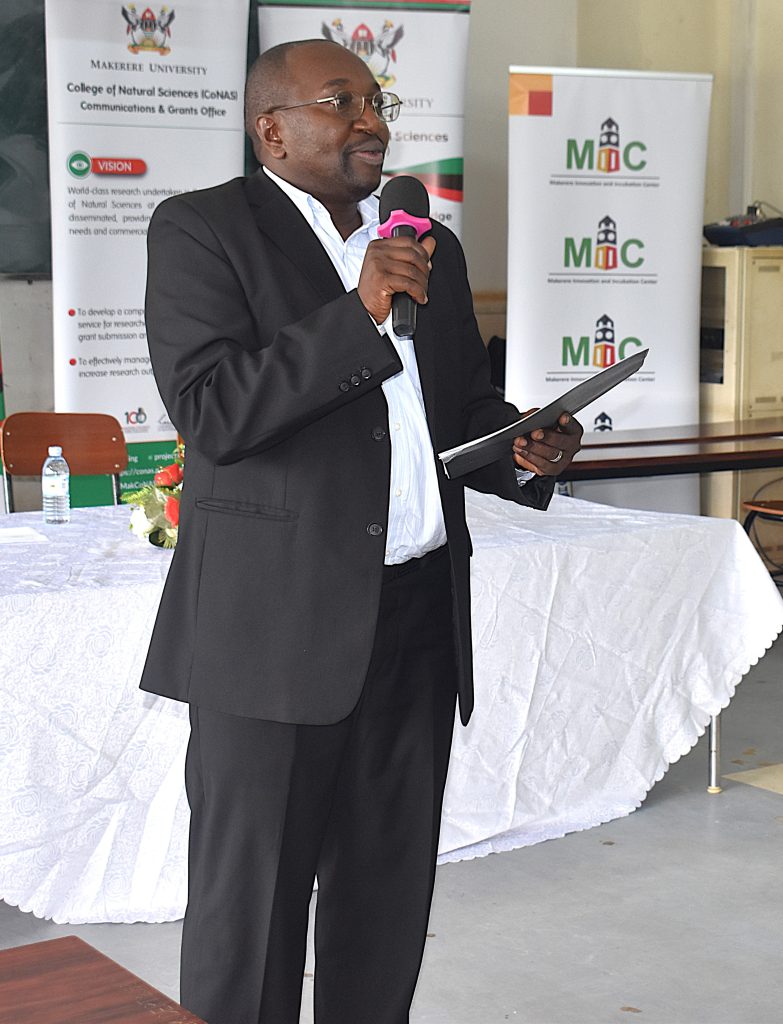
Addressing students on the significance of mental health in the journey of career development, Dr. Alex Behakanira emphasized the need to remain open-minded and adaptable. He noted that although job opportunities may appear scarce, the broader landscape of opportunities remains vast and ever-evolving. Dr. Behakanira encouraged students to strive for relevance not only in their professional environments but also within their homes and communities, underlining the importance of being well-rounded individuals. Echoing this sentiment, Mr. Henry Nsubuga stressed the importance of safeguarding one’s mental well-being throughout their career path. He advised students to cultivate a resilient mind-set and to be intentional about steering clear of situations that may lead to emotional distress or depression.
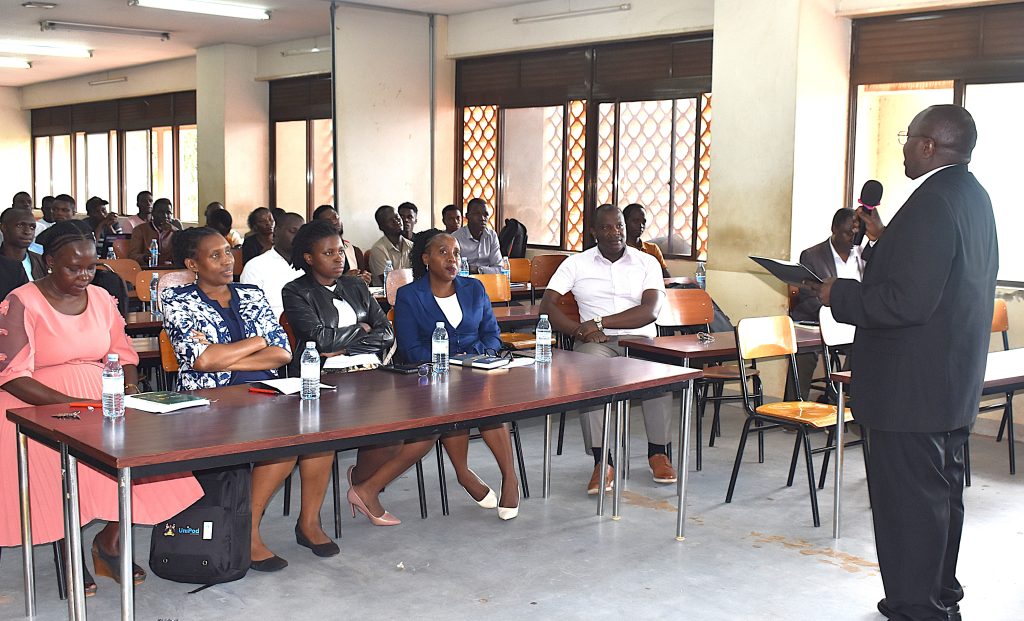
In his remarks, Prof. Juma Kasozi, the Deputy Principal of the College of Natural Sciences (CoNAS) and Head of Academics, expressed his appreciation for the initiative. He commended the effort as a timely and strategic intervention aimed at equipping students with the practical knowledge and emotional resilience necessary to navigate the dynamic and often challenging world of work. Prof. Kasozi emphasized that such initiatives play a crucial role in bridging the gap between academic theory and real-world application. He extended sincere gratitude to the seminar coordinators, praising their foresight and dedication in conceptualizing and organizing the programme.
The Terminal Seminar will be held on an annual basis.
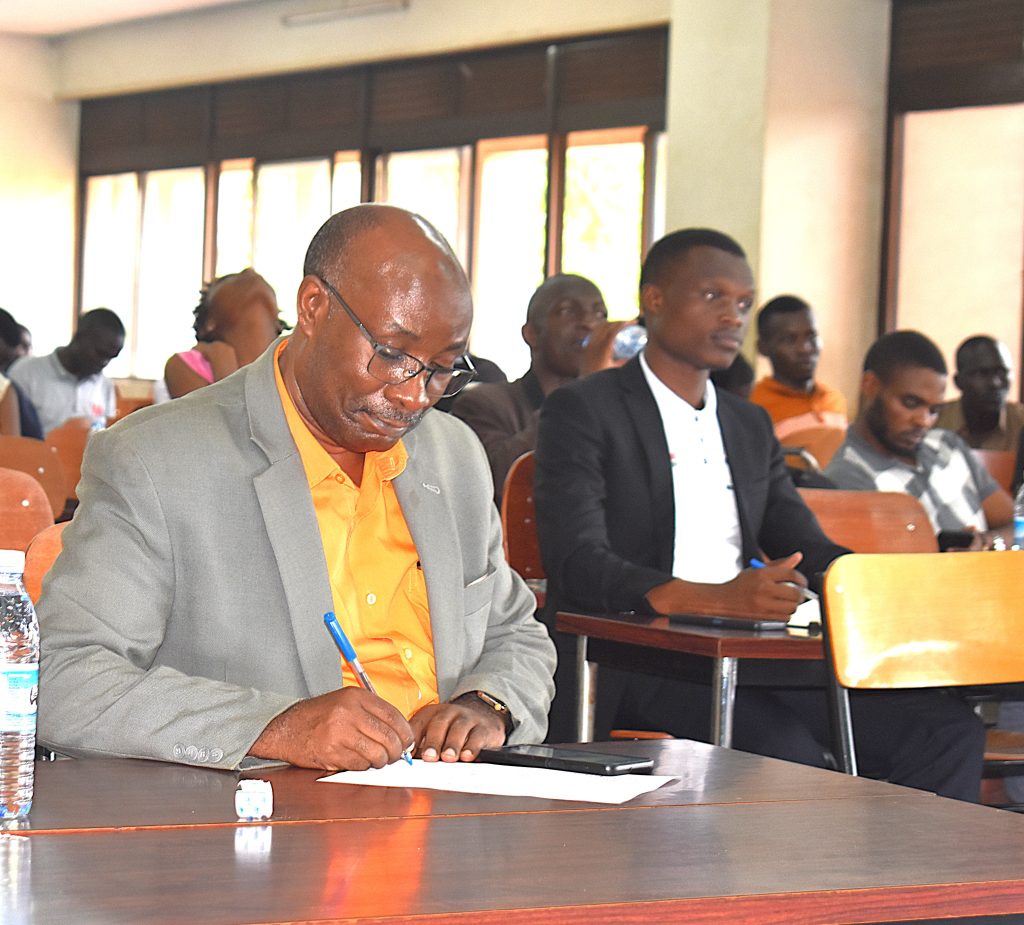
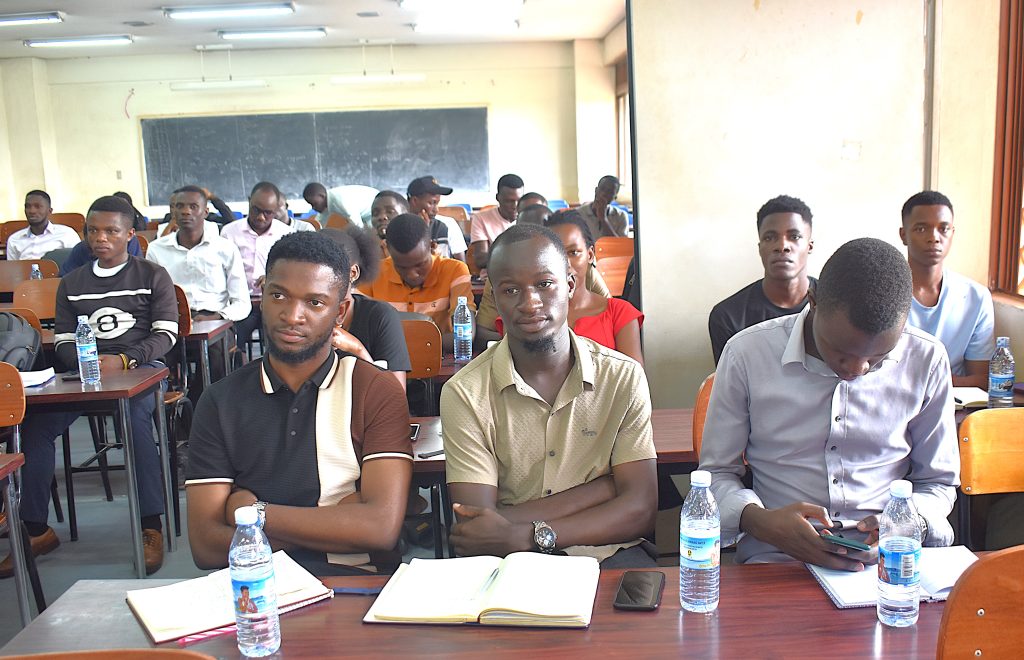

Trending
-

 General2 weeks ago
General2 weeks agoRe-advert: Admission to Undergraduate Programmes 2025/2026
-

 General1 week ago
General1 week agoRe-Advert for Applications for Diploma and Certificate Training
-

 General5 days ago
General5 days agoMakerere University Fees Waiver for 40 First Year Female Students 2025/2026
-

 General2 weeks ago
General2 weeks agoPress Statement on Ranking
-

 Health1 week ago
Health1 week agoCall for Applications: Responsible Conduct of Research (RCR) Training Course
